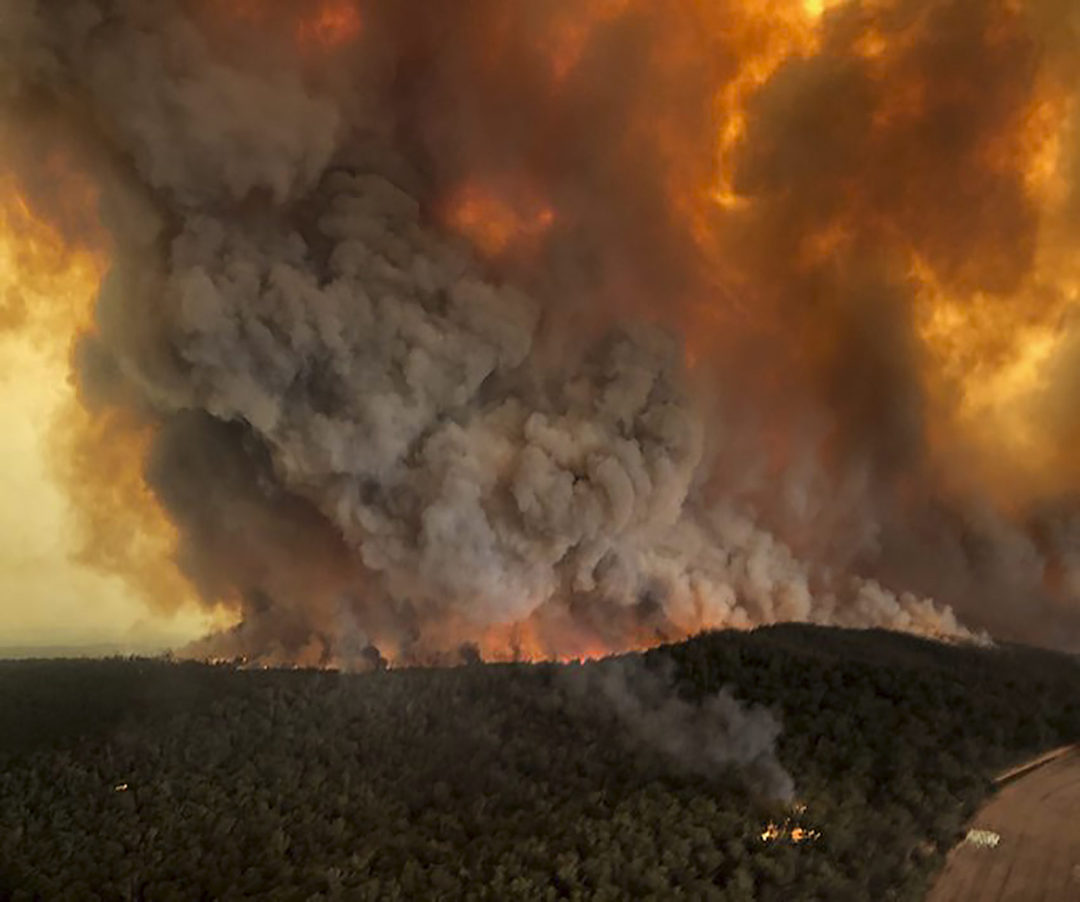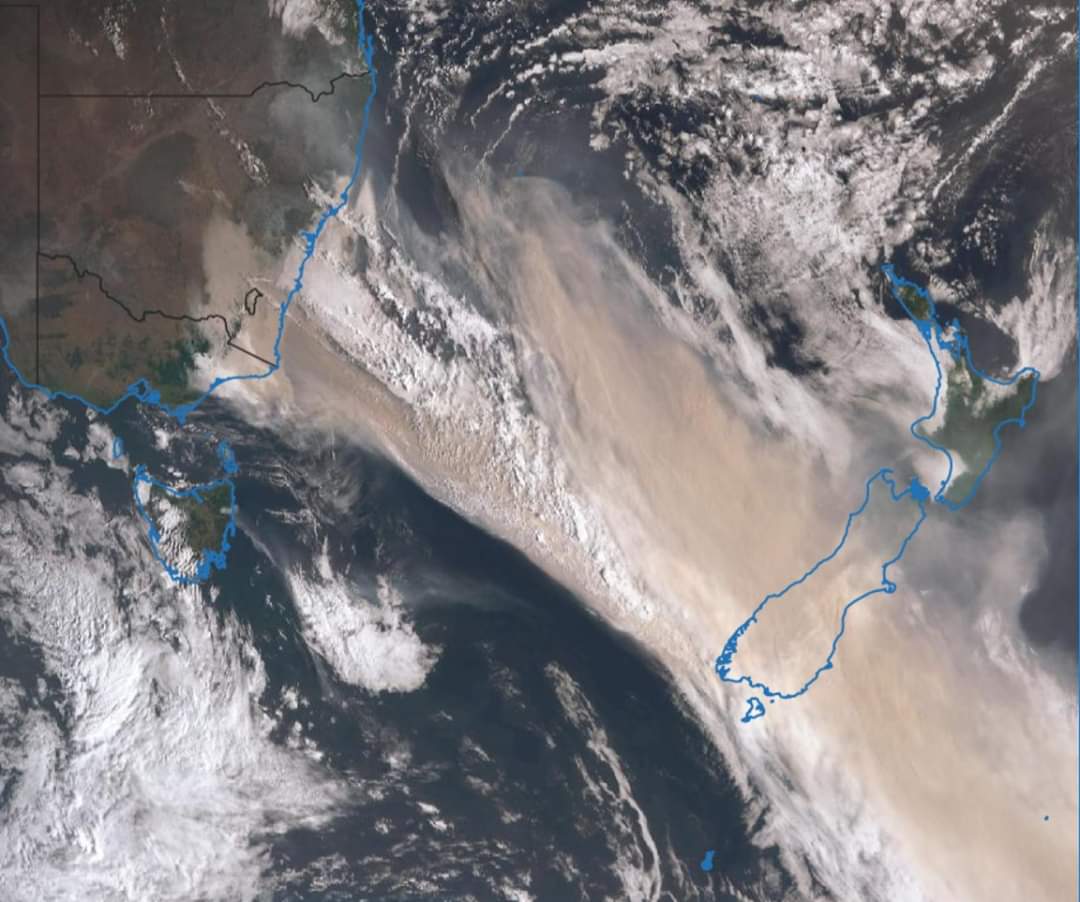
The image above shows how bushfires can pose a threat to public health.
The bush fires that are occurring in Australia can also affect the world. To elaborate, smoke billowing from the fires is currently making its way around the planet. In addition, it also injects aerosol into the atmosphere and causing carbon dioxide emissions. NASA satellite's measurements of the ultraviolet aerosol index showed aerosol values at some of the highest levels ever recorded. Larger aerosol values show that the smoke is sitting high up in the atmosphere which is also known as the stratosphere. Large pyrocumulonimbus storms are shooting smoke high up in the air as if they were a volcanic eruption or a nuclear explosion. According to the Washington post, recent studies showed that it can lead to a warming effect (climate change).

The image above shows a satellite image of Australia, and how the smoke is moving around the globe.